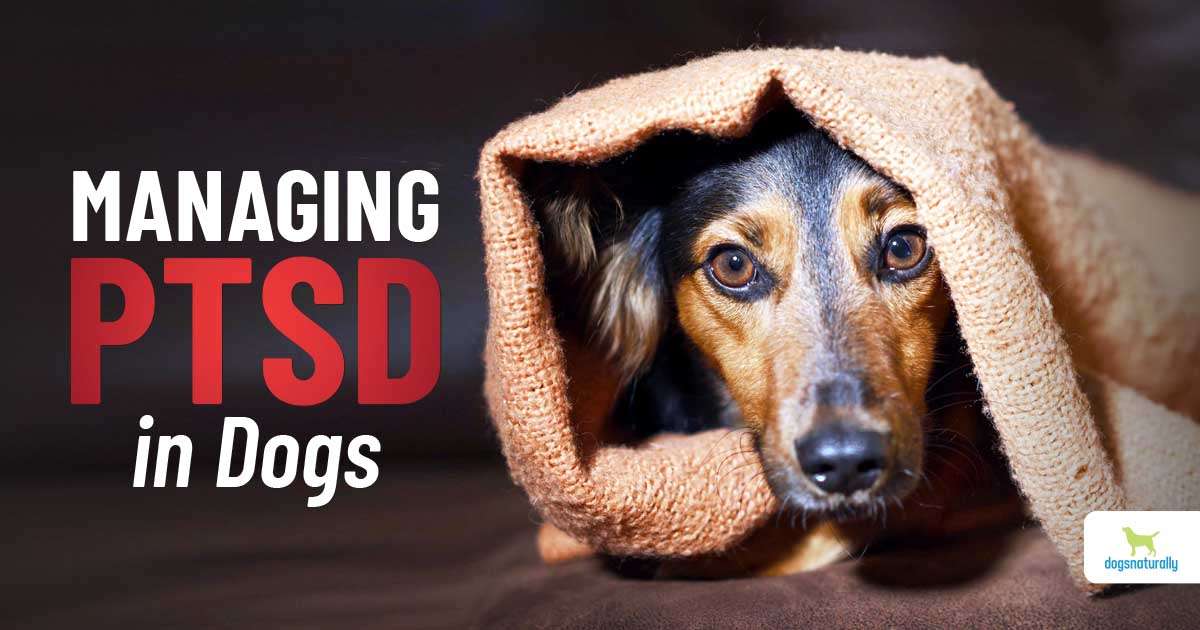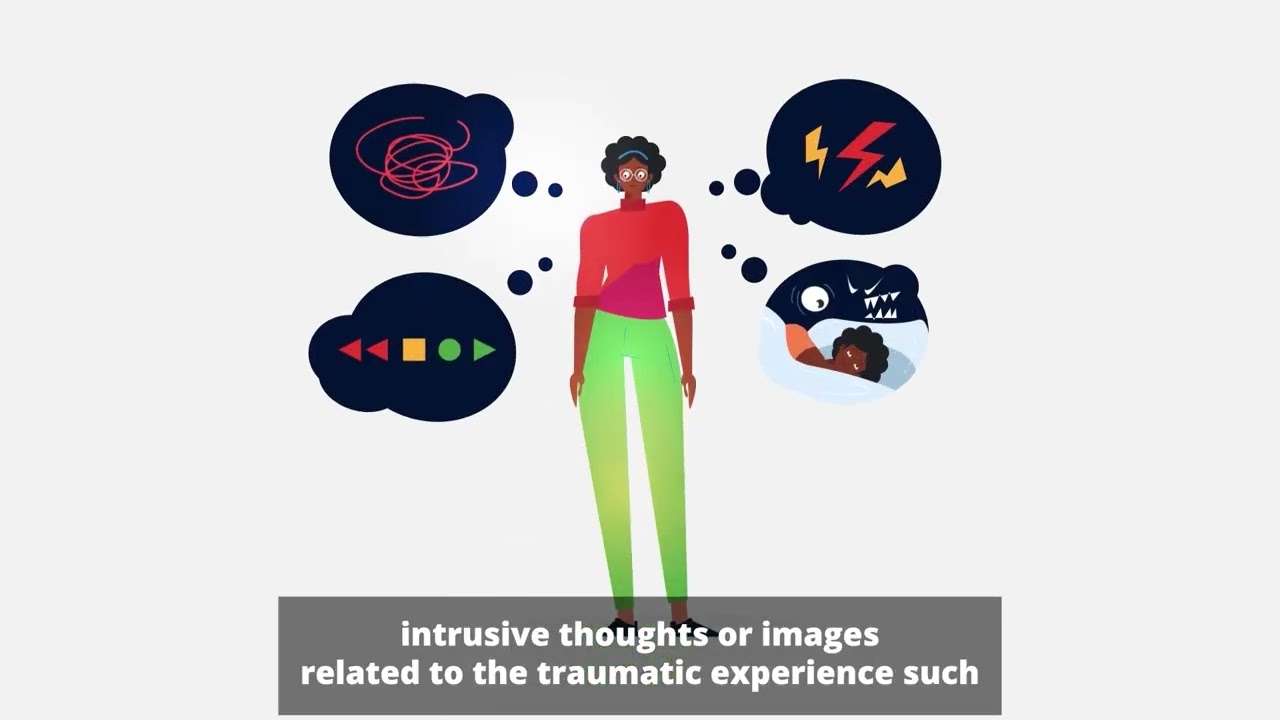Our dog Brennan was a recent rescue, in May of 2018, he had been found wandering on the highway after the ice storm, starving and very malnourished. When we brought him home, he was a curious, goofy, bold adolescent who delighted in self-entertaining, and was an absolute joy. One morning while walking him we witnessed a very bad car accident that involved a vehicle losing control and smashing through the window of the restaurant directly across the street from us. The sound of the impact was absolutely tremendous. From there, came sirens, firetrucks, police, and since we’d witnessed the incident I had to stay to give a statement. This, unfortunately prolonged his exposure to this very stressful event. Now since then his fears have grown exponentially, daily. What was once a curious, bold dog, Brennan has now begun to process the outside world as wrought with seen and unseen terrors. Every sound, shadow, sudden movement, car door slamming, car alarm, trees rustling, empty blue bin on the sidewalk, trains, motorcycles, lawnmowers, anything and everything has the potential to be a threat. He is in constant flight mode. His gait is no longer one that is open and excited to explore his world, it’s now in pre-flight mode. Most recently he became so terrified by an empty blue bin that he leapt up in the air, over the blue bin, into the street, and dragged me head first into the blue bin which of course confirmed that blue bins were evil. From there he panicked, and broke free running with the retractor leash smashing behind him on the sidewalk, creating an even more terrifying experience for himself. Luckily he fled home, thank god, but next time may not be so fortunate. He’s a wolfhound/poodle cross and is at least 130lbs – very strong and unreachable when he shuts down and goes into full flight mode. I am worried for my own safety now, and his. I sustained a torn rotator cuff, bruised sternum/rib and multiple scrapes and bruises from the blue bin event. Now a walk is no longer one he looks forward to. Any motion toward the gate has him fleeing to the back yard. Once off property, his expectation of potential terrors are all around us at any given moment.
Sept. 5, 2018
Brennan’s Owner
Caring For A Dog With PTSD July 16, 2020
Just as our pets often help their owners through difficult times, animals that have suffered from traumatic events may need extra support.
 Dr. Lori Teller, an associate professor in the Texas A&M College of Veterinary Medicine & Biomedical Sciences, says that because dogs can suffer from psychological conditions like their human counterparts, owners can benefit from having an awareness of possible causes, diagnosis, and how canine post-traumatic stress disorder may be managed to give your furry friend the best life possible following periods of stress and trauma.
Dr. Lori Teller, an associate professor in the Texas A&M College of Veterinary Medicine & Biomedical Sciences, says that because dogs can suffer from psychological conditions like their human counterparts, owners can benefit from having an awareness of possible causes, diagnosis, and how canine post-traumatic stress disorder may be managed to give your furry friend the best life possible following periods of stress and trauma.
Roughly 5 to 17% of dogs are affected with canine PTSD, but because the condition has only been recognized in dogs within the past 10 years, Teller says there is still much to learn.
“We don’t always know what may cause PTSD in dogs, but some potential causes are military or police work, being a bait or fighting dog, being raised in a puppy mill, severe abuse, living as a stray after being abandoned, trauma from a disaster (flood, fire, earthquake, tornado, explosion), or being attacked by other dogs or animals,” Teller said.
“The symptoms of PTSD in dogs are similar to those in humans and include chronic anxiety; hypervigilance; avoidance of certain people, places, or situations; sleep disturbances; fear of being alone; decreased interest in a favorite activity; or aggression,” Teller said.
Teller also says that these symptoms may not be apparent at the time of adoption because as a survival mechanism, some dogs will mask their symptoms until they gradually adapt to their new home, depending on the animal’s trigger.
Pet owners who suspect their furry friend may be suffering from this condition should ideally seek help from a veterinary behavioralist, who will develop an appropriate treatment plan. Pet owners seeking this care may wish to reference the American Veterinary Society of Animal Behavior’s directory.
If access to a veterinary behavioralist is not possible, your primary veterinarian will still be able to help your dog get the care they need.
“The best ways to manage PTSD in dogs will be a combination of behavioral therapy and medication,” Teller said. “Behavioral management might include desensitization therapy, in which a dog is exposed to low levels of stress, and then this level is gradually increased to build tolerance for that stimulus, playtime with a well-socialized dog, increased exercise, and mental stimulation. Medications prescribed could include anxiolytics, anti-depressants, or beta-blockers.”
Teller adds that time and patience are vital to the management of canine PTSD. Owners will need to actively work with their dog on a daily basis and be in regular communication with their veterinary team.
Although adopting a dog with a history of trauma requires a caring and dedicated owner, the bond that is formed between rescued dog and pet-parent can be an unbreakable gift that is well worth the time and effort.
Pet Talk is a service of the College of Veterinary Medicine & Biomedical Sciences, Texas A&M University. Stories can be viewed on the web at vetmed.tamu.edu/news/pet-talk. Suggestions for future topics may be directed to [email protected].
We’ve all heard of post-traumatic stress disorder (PTSD) in humans. But do dogs get PTSD too?
What Is PTSD In Dogs?
PTSD occurs in people who’ve experienced or witnessed a traumatic event. It can be a natural disaster, a serious accident, a terrorist act, war or combat. They could deal with threats of death, sexual violence or serious injury. PTSD is a psychiatric disorder as there’s often no physical injury. It can involve vivid flashbacks, nightmares and intense distress when reminded of the trauma.
Dogs go through traumatic experiences even though their means of recall is different from humans. And their way of expressing it is different. But the trauma and fear is real.
What Causes PTSD In Dogs?
PTSD in dogs is generally caused by traumatic experiences a dog has during her lifetime. The more stressful an experience is, the greater the chances for a dog to develop PTSD. Often, a dog can become fearful as a result of the high dose of stress she went through. The factors that put a dog in a hard-to-bear stressful situation can vary from one dog to another.
A dog who suffers from PTSD may need a little or a lot of help. Fear can transform into aggressive behavior, typically out of a protective or defensive reaction. This is why it’s worth learning how to handle PTSD to make things easier for you and your dog.
What Are Traumatic Experiences For Dogs?
Just like people, different experiences affect dogs differently. Some dogs are highly affected by a thunderstorm while others will sleep right through it. Here are some experiences that can have a profound effect on your dog.
- Changes in the weather, like a thunderstorm, flood or hurricane.
- Accidents around the house, car crashes and emotional trauma are others.
- Bad interactions with other people or animals can turn a normal dog into a stressed-out dog.
- The loss of her family or caretaker through death or abandonment.
- Military combat (dogs serve too).
- Physical and emotional abuse.
- Abandoned by her family in the wilderness.
Can Dogs Get PTSD From Fireworks?
Thunder and fireworks are some of the most common causes of fear that lead to trauma, anxiety … and PTSD. Not only is it the loud sound, but the sudden nature can cause fear and stress in your dog.
Symptoms Of PTSD In Dogs
In humans, PTSD manifests through a series of thoughts, memories or dreams. This is because the problem is one that manifests at a cerebral level. The same happens in dogs … only our companions cannot explain what’s happening to them.
A dog suffering from PTSD-like symptoms will show changes in her behavior. Usually, these changes are of a negative nature, as they’re fueled by stress and discomfort. PTSD can even lead to aggressiveness triggered by fear and stress.
A dog suffering from PTSD may become less trustful when around new people. She might become shy, preferring to hide instead of seeking human company. Such a dog may also be vigilant in an excessive manner. Any changes in her surroundings might make her raise her guard.
How Do I Know If My Dog Has PTSD?
A dog with PTSD will have symptoms similar to those in humans. They include:
- Chronic anxiety, panic, separation anxiety and fear of being alone.
- Anorexia.
- Reluctance to eliminate.
- Pacing, restlessness or not sleeping.
- Hesitation when visiting certain places (can happen even in familiar places).
- Barking often and for no obvious reason.
- Fear urination when greeted by a stranger.
- Hiding at the smallest sign of disturbance, even when nothing appears to be wrong.
- Becoming highly vigilant and constantly watching what is happening around her.
- Trembling or shaking, even if it isn’t cold or there’s no sign of immediate danger.
- Becoming shy around people and trying to avoid human contact.
- Aggression (to the point of becoming dangerous to everybody).
- Unpredictable or unusual reactions to stress-generating factors.
Understanding A Dog With PTSD
An overly stressed dog will usually be highly sensitive to external factors. Once PTSD develops, even the smallest amount of stress can cause a reaction. This can put your dog in a fragile state.
The most important thing you need to do is be calm and patient with your dog. Remember to adopt a calm state of mind and behavior in her presence. You need to inspire confidence and reassure her at all times. Use your body language and state of mind to let her know that nothing bad will happen.
Don’t get mad, upset or irritated with your dog. Don’t raise your voice at her. Try to avoid quick, jerky movements. Instead, create a calm and soothing environment around your dog. This will allow a faster recovery.
Bear in mind that the recovery process can be slow and it may take a while. Embrace your inner patience.
RELATED: How your own health and stress level impacts your dog …
Signs A Dog Is Having A PTSD Episode
When you know your dog suffers PTSD you need to be aware of her behavior around others. Dogs communicate a lot through body language. She will exhibit signs that tell you he is in distress. The ability to read your dog’s body language will give you the power to take proper precautions. This will lower your dog’s distress and keep everyone else safe.
Here are the signs you should look for:
- The dog pulls her ears back.
- Her tail is low, between her legs.
- Dilated pupils.
- The position of her body is low, near the ground.
- She will begin to breathe at a rapid pace.
- She may be panting and drooling.
RELATED: Read how CBD oil can help your dog with anxiety …
How Do I React To My Dog If She Has PTSD?
Dogs don’t maintain memories as humans do so your dog can move forward with a little help from you. You can help your dog with PTSD by being positive and happy. You don’t want to coddle a dog when a situation that causes fear arises. That will reinforce her fear. Instead, don’t feel bad for her, and show her you’re cheerful. Teach her to associate the situation with good things like a cuddle, playtime, kind words or a treat.
How To Help A Dog With PTSD
Seeing your dog in a traumatized state can be very tough. But you have a chance to make things better, even in the most severe cases. The process will take time and effort, but it is possible to get positive results.
It’s very rewarding to see a traumatized dog regain her self-confidence and desire to live and play. Here are some things you can do to help your dog.
1. Create A Safe Space
Dedicate an area of your house to your dog and make it as safe as possible. If it’s more convenient for you, you can even create several safe spaces for your dog around the house.
Use a dog bed, mat, blanket … anything that’s soft and comfortable to make a little nest. Place it in an area that’s cozy and protected … not in the middle of a room. While your dog relaxes and rests there, make sure nothing bad happens or startles her. Her nest should be a place that feels safe to her.
Supervise your dog while she spends time in these safe areas. The idea is to teach your dog to associate these places with security and calmness. This way she can take a break from feeling scared and stressed all the time.
2. Come Up With A Daily Routine
A routine is good for all dogs, not just those suffering from PTSD. It helps them get organized and know what to expect at each moment of the day.
Your dog’s routine should include daily walks, mealtimes, playtime, and other activities. Make sure that your dog takes part in activities at the same hour each day. This way, she’ll know what to expect and when to expect it.
When you remove the element of surprise and help your dog predict what will happen next, it can work to keep her calm. This way, she won’t get scared because she’s used to the activity.
3. Choose Diet Over Medication
When a dog has anxiety, veterinarians may prescribe beta blockers to slow your dog’s heart rate. Or they might offer antidepressants like Prozac. Instead, you need to add food to your dog’s diet that are naturally calming. Give your PTSD dog foods like fish, garlic, nuts and seeds. Add potassium rich foods like bananas and magnesium rich foods like leafy greens, broccoli and green beans. You also want to make sure your dog has omega-3 fatty acids in her diet for inflammation, heart and brain health.
RELATED: EPA and DHA support brain health in your dog: learn about sources of these essential fatty acids.
4. Offer Support, But Allow Her To Choose
As dog owners, we’re tempted to think we know what’s best for our dogs. But, when dealing with a dog suffering from PTSD, things change. To increase the quality of life for your dog and lower her levels of stress, you need to let her choose what feels right.
What does that mean? Allow your dog to choose where to go on walks, instead of pulling her after you. If your dog’s nervous about a car ride, don’t insist on it. Try your best to avoid any stressful situations. Look for distress signs in your dog at all times and allow her to do things the way she finds it comfortable.
5. Adopt A Positive State Of Mind And A Calm Attitude
Dogs are very receptive to the way we are on a daily basis. If you’re upset or worried, your dog will sense it and will reflect your mood and state of mind.
Instead, be calm and reassuring. If your dog senses your confidence, she’ll feel much better in your company. She’ll feel safe and will stop being so vigilant, trying to be ready for whatever may happen. When you’re happy, she’s happy.
6. Use Natural Calming Remedies
It’s possible to calm down a nervous or anxious dog with safe and natural remedies. CBD oil, homeopathic remedies, Bach Flower Essences and essential oils are some of the options. There are even body calming therapies that might help, like a Thundershirt, T-Touch Wrap or weighted blanket. These will remove stress without having to give your dog drugs. Hands-on work like massage can also be soothing for some dogs.
RELATED: Make a hands-on connection with your dog through bodywork…
Can A Dog Help Someone With PTSD?
Let’s look at human trauma and PTSD and how dogs can help. Just being in the company of a dog can lift your mood or help you feel less stressed. Dogs are ideal as personal support animals who can assist someone like a military veteran suffering from PTSD. Dogs can be trained to do room searches and turn on lights. They detect anxiety and distress in their handlers. And these dogs are able to alert help or interrupt panic attacks during the day. They even learn to nibble at a veteran’s feet when they become agitated in their sleep.
Try these natural stress relievers for your dog with anxiety and fear. With patience and understanding and you by her side, you can help your dog work through PTSD.




